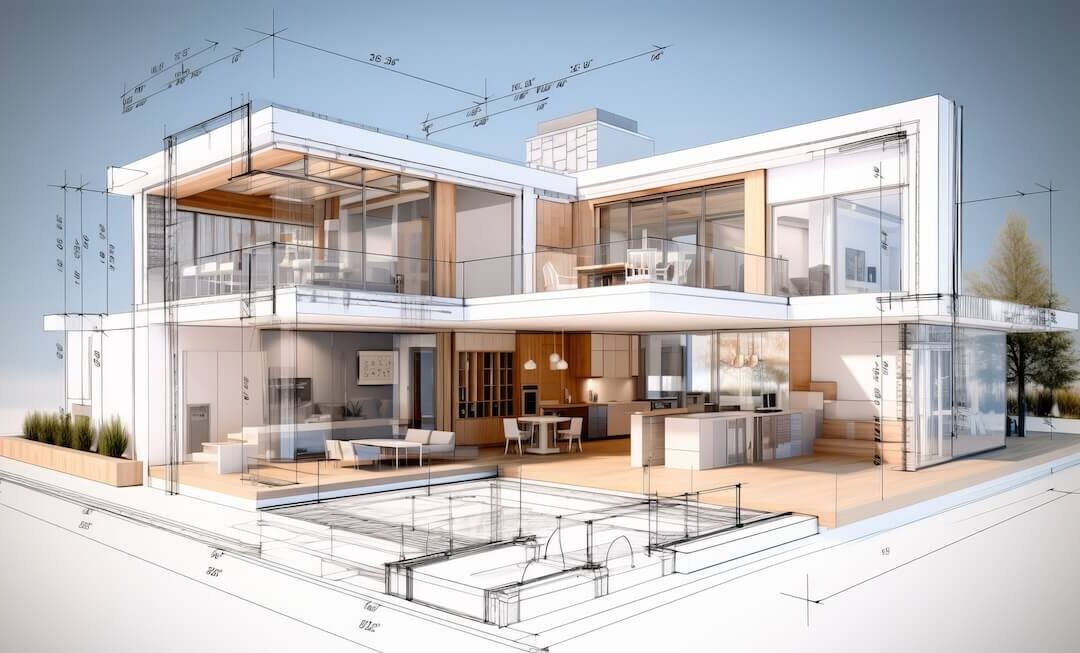
When you’re moving architectural projects forward, speed matters. So does clarity. The faster you can turn ideas into vivid, representative visuals, the sooner you can get feedback, make revisions, and bring designs to life.
To achieve these goals, architects need the right tools to create high-quality content. Thanks to the latest innovative solutions and technology, this is easier than ever. Powerful content creation software empowers architects to generate impressive, detailed visualizations faster than ever before.
How High-Quality Content Creation Software Enables Useful Architectural Visualizations
Content creation software helps architects turn complex concepts into gorgeous visuals that their clients and colleagues can understand at a glance. Whether these visuals are 2D sketches or full 3D renderings, they can simplify the design process by allowing real-time adjustments and more intuitive collaboration.
Integrating High-Powered Yet Compatible Visualization Tools
With the right innovative solutions, architects can integrate design, rendering, and collaboration tools effortlessly.
Selecting the right tools can provide architects with significant benefits, including:
- Enhanced visualization for clear, accurate presentations.
- Reduced rendering times, allowing for quicker revisions.
- Streamlined workflows so all project phases stay connected, from initial sketches to final renders.
- Improved accuracy to help architects avoid costly design errors.
These benefits can make all the difference when facing tight deadlines or working on high-stakes, timely projects.
Fortunately, setting your team up to experience these benefits can be more accessible than you may think.
Your Step-by-Step Guide for Faster, More Efficient Architectural Visualizations
Here’s a streamlined approach forward-thinking architectural professionals can use to optimize project processes, reduce turnaround times, and deliver stunning visuals with ease.
Step 1: Set up an efficient workflow.
The first thing you should do to create a workflow that works well for all parties is to get everyone on the same page. Take the time to define approval procedures, set clear timelines, and think ahead to identify potential bottlenecks.
Even if your team already works well together, reevaluating workflows at the beginning of new projects can ensure low-stress, seamless, and on-scope processes.
Step 2: Lay the groundwork for real-time collaboration and feedback.
When managing and contributing to architectural projects, you’ll need to gather input and approvals from several internal and external team members. Keeping feedback loops tight and transparent will be in everyone’s best interest.
Consider:
- De-siloing your data and using shared project folders, all easily accessible in a centralized project hub.
- Tracking all feedback and project revisions in easy-to-access documents or versions of deliverables.
- Scheduling short and frequent status update meetings so issues can be addressed before they create delays.
Step 3: Set up the right hardware and software infrastructure.
Even the highest-powered content creation software won’t perform well in a vacuum. Before selecting your ideal tools, ensure your team is equipped with the necessary infrastructure to manage the complexity of architectural visualization.
Your needs will depend on your unique goals, but a few items to start with may include:
- High-performance workstations with powerful GPUs optimized for 3D rendering, such as NVIDIA’s Quadro series.
- Cloud, on-prem, or hybrid storage solutions to store, process, and share large files remotely—enabling real-time access and collaboration across teams. Options may include AWS, Wasabi Hot Cloud, Google Cloud, Dell, Qumulo, or Synology.
- Enough network bandwidth! Ensure your network infrastructure can handle high data transfer speeds. This will improve efficiency for both on-site and remote teams.
Step 4: Choose the right content creation software for your needs.
The best tools for your ideal architectural visualizations will depend on what you want to do with them. Whether you require 3D modeling, rendering, or simulation software, some of today’s top solutions may include:
Autodesk solutions for architecture: As a Gold Autodesk Partner, Annex Pro offers expert support to help architects leverage Autodesk tools such as Revit, AutoCAD, and 3ds Max for architectural visualization.
V-Ray and Arnold: Ideal for creating photorealistic renderings, Autodesk Arnold and Chaos V-Ray allow architects to produce stunning, client-impressing visualizations.
SketchUp: Known for its simplicity and speed, SketchUp is perfect for quick 3D modeling and iterative design.
Enscape: With real-time rendering and VR capabilities, Enscape allows architects to present wildly immersive designs for client approval.
Let’s Make Architectural Visualization Technology Work Hard for You
As the latest architectural visualization tech continues to evolve—and client expectations continue to change—staying ahead of the curve is crucial. Annex Pro is ready to help you fast-track projects without sacrificing quality by integrating cutting-edge visualization solutions into your processes.
Looking for a partner to bounce ideas off of or interested in making your projects simpler before they begin? Explore Annex Pro’s innovative tools and use cases, and reach out today to discuss your options with our friendly, experienced team.

